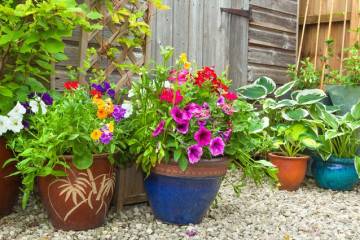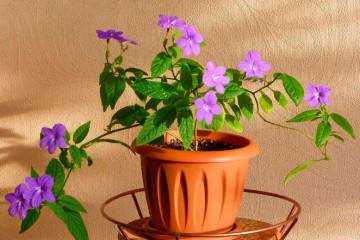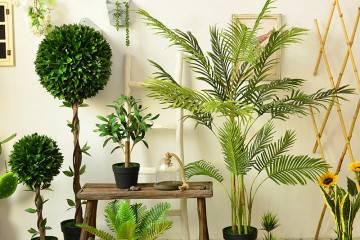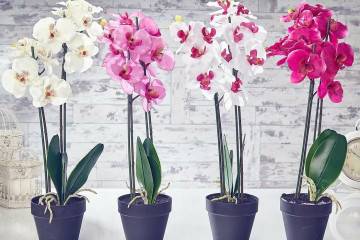What indoor plants can not be kept at home
Content:
- General information about dangerous plants
- Plants poisonous and dangerous to humans
- Plants Dangerous to Children
- What indoor plants can not be kept in an apartment according to folk signs
- Rules for keeping flowers and plants in the house according to feng shui
- Is it possible to keep climbing indoor plants at home
There are an incredible amount of plants for the home. How not to make a mistake when choosing and not bring a dangerous look into the house? Before you buy a new green resident for a house, you first need to find out what kind of plant it is and whether it will harm the health of the residents of the apartment.
General information about dangerous plants
The question is brewing which indoor plants cannot be kept at home. The complete list of dangerous plantings is quite long, below will be described the most popular representatives that are most often found in stores. The danger is the pollen of such plants, sometimes the juice turns out to be poisonous, often the flowers release toxic compounds into the air.
There are indoor flowers that cannot be kept at home at all. These are representatives of the green world with hazardous secretions or plants - strong allergens, their content in the house can lead to diseases such as asthma. After reading the article, it is advisable to immediately check your windowsills to make sure they are not there.
Subsequently, people do not see the connection between the purchase and a sharp deterioration in the well-being of an animal or person. Not everyone immediately comes to mind that a plant bought a couple of days ago may be to blame for the malaise.
Plants poisonous and dangerous to humans
This list contains indoor flowers that pose an immediate danger to all inhabitants of the house.
Euphorbia potted
Quite an exotic representative with huge green leaves.
There are several types of milkweed. Particularly poisonous are the thorns of some species - pricked with which you can get an extremely painful reaction.
Milkweed leaves and stalks produce poisonous sap. If it gets into the gastrointestinal tract, then you can seriously poison yourself, and if you touch it with your skin or mucous membrane, irritation or even a burn cannot be avoided.
Croton
A beautiful and densely growing plant that resembles a mini-tree. The leaves are incredibly attractive.
If even a small drop of croton juice enters the bloodstream through a wound or in another way, consult a doctor immediately, as there are known cases of death. If croton juice comes in contact with the skin, wash the touch area several times.
Azalea
A favorite among flower growers is azalea. The plant is popular with flower growers around the globe. A luxurious flower that has a rich palette of shades, but with all this, the azalea is poisonous right down to the roots.
Why is azalea so dangerous? The foliage contains andromedotoxin, a strong poison that, if ingested, can cause convulsions, and the glycoside can cause nausea or poisoning.
Poinsettia
Dangerous as a green space for the home. Contains toxic milky juice that can be harmful.
If you cut off the leaves from the poinsettia, they will begin to emit poisonous white milk, which provokes burns and irritation.
Clivia
An excellent houseplant with very beautiful flowers, grouped in an umbrella of 12 or more flowers. The leaves of the plant are dense, glossy, elongated.
The most poisonous parts of clivia are leaves and roots. Great care must be taken when handling the plant and be sure to use rubber gloves.
Others
There are also quite a few allergenic plants. These are well-known pelargonium, cyclamen, fern, aglaonema and others. These harmful house flowers are very dangerous during their flowering period, they can cause allergic shock, severe dizziness or irritation in the body.
Plants Dangerous to Children
If harmful indoor plants are so dangerous to humans, it remains only to imagine how dangerous they are to children.
Among the species that in no case should be kept in the nursery:
- Dieffenbachia. It always attracts the eye with a contrasting pattern and large leaves. But dieffenbachia milky juice causes terrible itching and redness in a child. And if the liquid gets into the mouth, then the baby can be poisoned, burn the mucous membrane or get tissue edema.
- Monstera. Contains a strong poison. It looks, of course, incredible - huge size, large leaves. But the flower sap is so toxic that contact with it causes burns. If it accidentally splashes in your eyes, you can get serious problems. A child should not be allowed to eat even a small piece of a leaf - this threatens inflammation of the gastrointestinal tract or poisoning.
- Alocasia. It has beautiful decorative leaves, in the veins of which the strongest poison is hidden. But in this case, it concerns not only leaves and stems, but also root fumes. So, if there is a baby in the house, it is necessary to refrain from acquiring alocasia. When transplanting or any other contact with this plant, be sure to wear protective gloves. A pronounced cyanide odor immediately spreads to the entire room if the root is disturbed. A child or cat may accidentally lick off a drop of alocasia juice, which can lead to serious health problems.
- Oleander. It can easily lure with its deceptive beauty. But if you inhale its aroma deeper, you can get a headache, an attack of nausea, or, even worse, faint. The liquid in the stems causes burns and is dangerous for allergy sufferers. If oleander juice gets into a child's eye, the consequences can be extremely sad - the child may lose his eyesight.
- Ficus. Experts also do not recommend choosing ficuses as landscaping for a children's bedroom, since at night they absorb a large amount of oxygen, instead of producing it.
For example, Kalanchoe, geranium, chlorophytum, spathiphyllum, begonia, etc. are well suited. Such flowers will take care of the purity of the air in the children's bedroom and fill it with positive energy.
What indoor plants can not be kept in an apartment according to folk signs
According to folklore, the most dangerous plants are:
- Lilies.Very beautiful flowers, but in no case should they be kept in the house, and especially in the bedroom. Lilies are not like other plants because they absorb oxygen and release carbon dioxide into the air. This plant is a vampire that sucks energy from a person and takes away positive emotions.
- Dieffenbachia. It is believed that it takes away the strength and health of the residents of the apartment. If the apartment in which such a plant is located is small, then this will adversely affect its inhabitants. According to popular beliefs, the flower is only suitable for corridors and spacious rooms.
- Succulents also cannot be kept in the bedroom, better in the hallway or in the kitchen. Favorite by many flower growers, cacti, according to signs, are not recommended to be kept in the bedroom where the girl lives. The plant will be bad for her love life.
- The pike tail or sansevieria is a very dangerous plant. According to the signs, this flower destroys family life and attracts loneliness with its energy.
- Mother-in-law's language. It is believed to be a very cunning flower. It is especially not recommended to grow in a home where there is a single woman. Language takes away strength and has negative energy. The mother-in-law's language is popularly called "muzhegon". It is believed that this plant has been driving men away from home since ancient times. All grandmothers know the folk method of avoiding loneliness: remove all mother-in-law's tongues from the house!
- Ferns, according to the signs, suck energy from the inhabitants of the house. If the apartment is very small, then the person literally feels how strength is lost, tiredness piles on, apathy sets in.
- Lilacs also have no place in the house. She is undoubtedly very beautiful and smells great, but she also attracts negativity and bad energy.
Today, few people believe in folk omens and superstitions. Therefore, all of the above flowers often end up in people's homes.
Flowers of separation and loneliness
According to esotericists, there are flowers, the energy of which is extremely negative. If you keep such plants at home, they can harm a person, doom to loneliness or accompany separation.
Dangerous colors include:
- all vines;
- Decembrist;
- balsam;
- ivy;
- monstera;
- cacti.
Superstitions say that if these harmful house plants stand at home, then the man will not be comfortable - because of this, he will constantly disappear, he will not strive for a family. This can be seen by asking the housewives who grow such flowers. But if you keep them outside the house, for example, in the yard, then there is no problem.
Rules for keeping flowers and plants in the house according to feng shui
The first and most important rule of feng shui is that flowers should not be sick or infected, they should not be pests. Only in this case will they radiate positive energy.
The second important rule: flowers in the house should not be arranged in a chaotic manner, since all plants, people and animals have a different aura. The best places for landscaping in the house are corners and niches. Particular attention should be paid to landscaping in the nursery and in the bedroom.
Flowers should support and complement human energy. Plants with pointed long leaves have a masculine aura, and those with round and soft ones have a feminine energy.
If plant owners want to avoid quarrels at home, it is best to plant flowers with rounded leaves in the rooms. They also give peace, are responsible for women's well-being and happiness. But if the tenants of the house do not have enough self-confidence, perseverance and stamina, then it is better to give preference to flowers with masculine energy.
Is it possible to keep climbing indoor plants at home
This type of plant is very common among gardening lovers, but not all of them know that keeping them in the house is not recommended.
This is because such flowers emit an aggressive male energy. These are all plants such as ivy, vines and various loaches. They are also vampire plants that feed on human energy. It is permissible to grow them exclusively in the yard, on the balcony or on the street. There, on the contrary, they protect the hearth.
When choosing landscaping for your home, remember that flowers are a source of clean air and beauty. They should only be beneficial and help maintain the indoor climate. However, not all plants have such functions; some, on the contrary, are dangerous to humans. Therefore, the selection of flowers must be approached with special care.

























